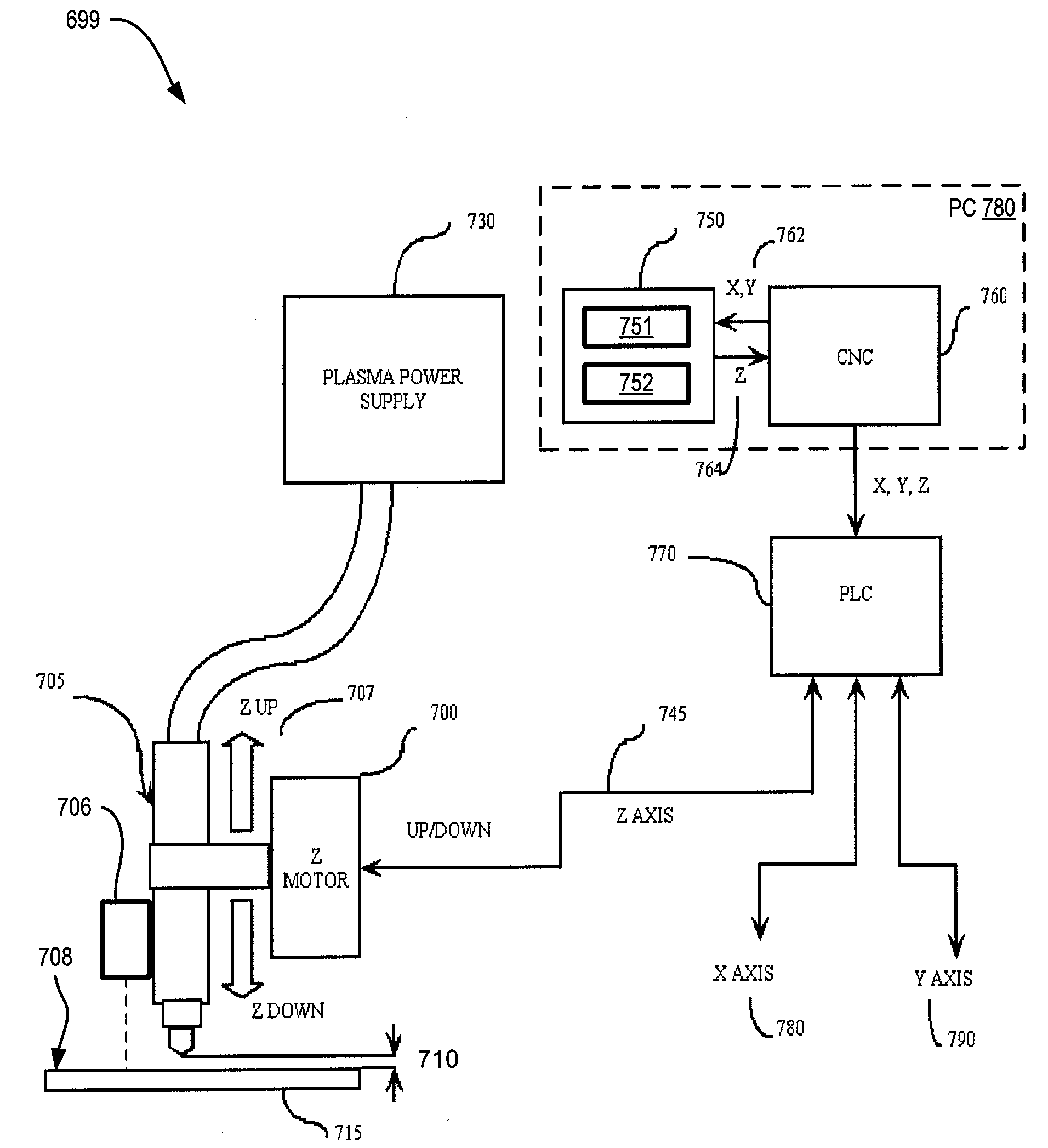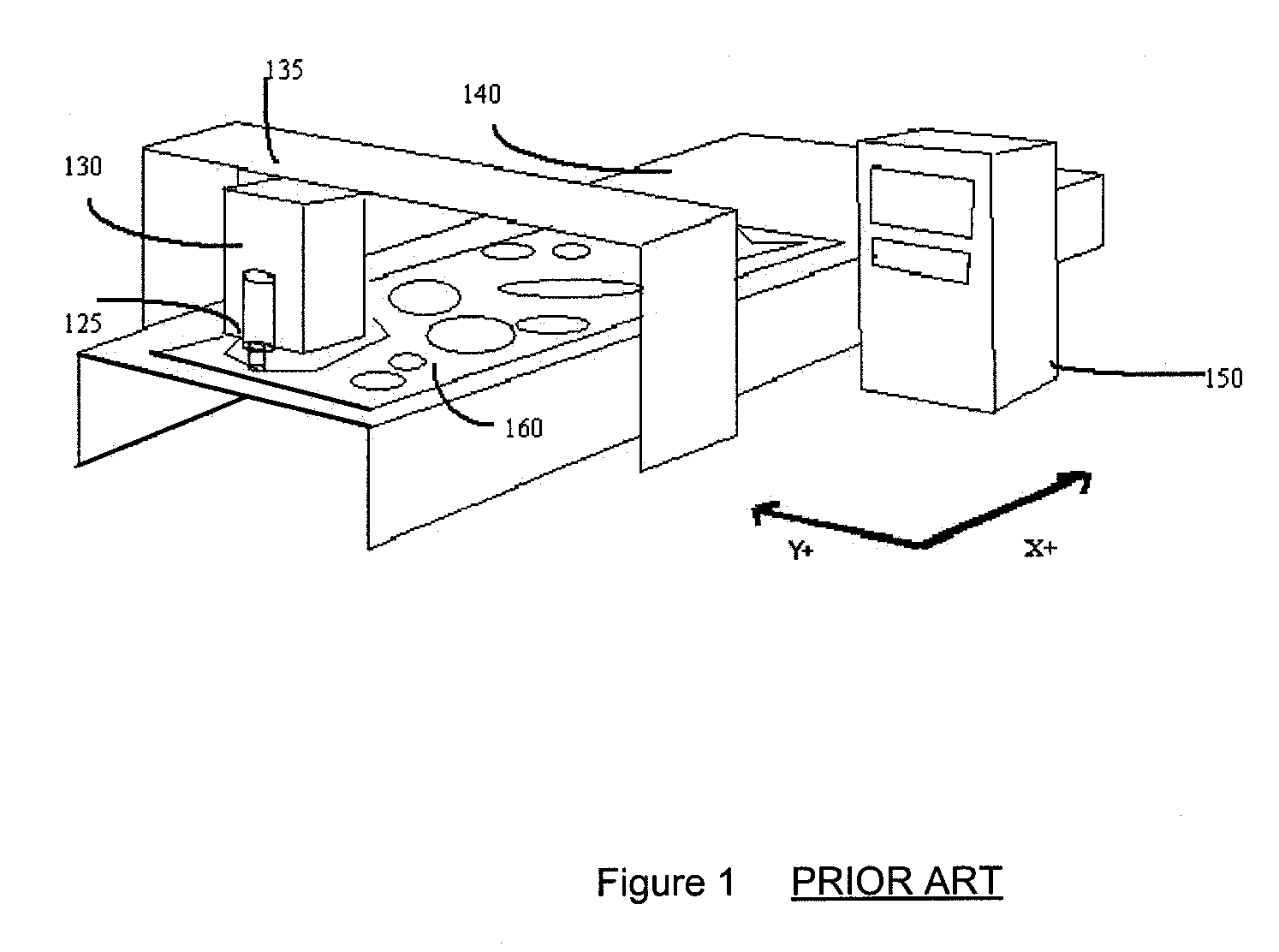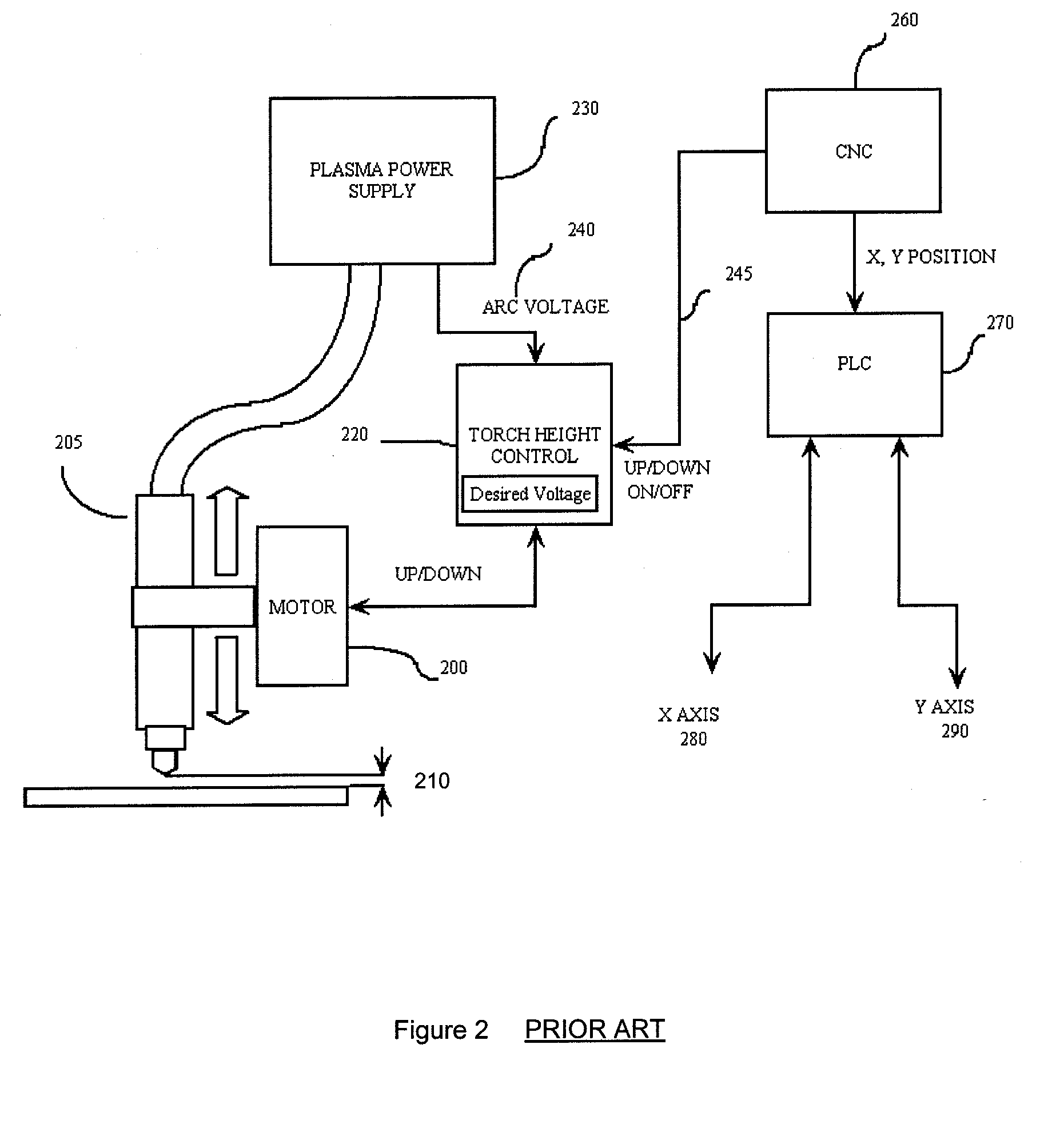Methods And Systems For Predictive Torch Height Control
a technology of height control and prediction method, applied in the field of part cutting technology, can solve the problems of ineffective interference between sensitive electronics in sensors used in different measurement systems, high risk of cutting head colliding with the plate in the field of part cutting, and high risk of large cutting distance,
- Summary
- Abstract
- Description
- Claims
- Application Information
AI Technical Summary
Benefits of technology
Problems solved by technology
Method used
Image
Examples
Embodiment Construction
[0041]FIG. 7 shows one exemplary predictive torch height control system for a numerical control (NC) machine 699 that cuts parts out of a plate 715. Plate 715 may also be referred to as a workpiece, hereinafter. NC machine 699 includes a computer numerical controller (CNC) 760, a programmable logic controller (PLC) 770, a Z axis motor 700 and a plasma cutting torch 705 powered from a plasma power supply 730. Although shown as a plasma cutting torch and supply in this example, cutting torch 705 and plasma power supply 730 may represent any type of cutting torch known in the art. As shown, CNC 760 sends X, Y and Z coordinates to PLC 770, which in turn outputs X axis 780 and Y axis 790 values to control horizontal position of cutting torch 705 (i.e., control of a gantry carrying cutting torch 705) and outputs Z axis value 745 to Z axis motor 700 for controlling a vertical movement 707 of cutting torch 705.
[0042]NC machine 699 also includes a surface prediction module 750 that interface...
PUM
| Property | Measurement | Unit |
|---|---|---|
| thickness | aaaaa | aaaaa |
| thickness | aaaaa | aaaaa |
| thickness | aaaaa | aaaaa |
Abstract
Description
Claims
Application Information
 Login to View More
Login to View More - R&D
- Intellectual Property
- Life Sciences
- Materials
- Tech Scout
- Unparalleled Data Quality
- Higher Quality Content
- 60% Fewer Hallucinations
Browse by: Latest US Patents, China's latest patents, Technical Efficacy Thesaurus, Application Domain, Technology Topic, Popular Technical Reports.
© 2025 PatSnap. All rights reserved.Legal|Privacy policy|Modern Slavery Act Transparency Statement|Sitemap|About US| Contact US: help@patsnap.com



